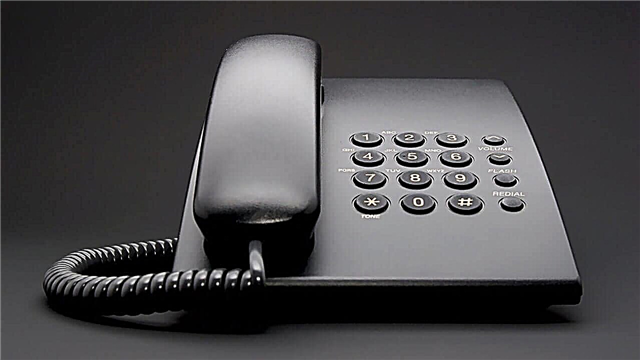Even if our efforts to become one of the rich and famous are unsuccessful, we have one important advantage over many famous people: we are real.
Yes, this is not a reservation. Some of the supermodels, brand mascots, composers and authors are nothing more than the imagination of very creative people. And we will tell you about the most famous fictitious celebrities.
10. Allegra Coleman
 Supermodel and actress Allegra Coleman graced the cover of Esquire in 1996, and in an accompanying article, writer Martha Sherrill stated that Coleman would be "the next Hollywood dream girl." An article about Allegra described her relationship with actor David Schwimmer, and said that Quentin Tarantino himself allegedly broke up with Mira Sorvino for the sake of an affair with Coleman.
Supermodel and actress Allegra Coleman graced the cover of Esquire in 1996, and in an accompanying article, writer Martha Sherrill stated that Coleman would be "the next Hollywood dream girl." An article about Allegra described her relationship with actor David Schwimmer, and said that Quentin Tarantino himself allegedly broke up with Mira Sorvino for the sake of an affair with Coleman.
After the magazine appeared in newsagents, agents lined up to get Coleman - only to find out that the article was a very successful hoax created by Sherrill.
For actress Eli Larter, who portrayed Coleman, it all ended perfectly. Ultimately, she got the main role in the series "Heroes" a few years after the falsification.
9. Betty Crocker
 According to a survey conducted in 1940, Betty Crocker became the second most famous woman in America, losing first place to Eleanor Roosevelt. It is a decent result for an advertising image that did not exist in reality.
According to a survey conducted in 1940, Betty Crocker became the second most famous woman in America, losing first place to Eleanor Roosevelt. It is a decent result for an advertising image that did not exist in reality.
Initially, Betty responded to letters sent to the Washburn Crosby flour milling company. And in 1936 her first portrait appeared, in which the features of the company's employees were combined. Over the next years, Betty's face changed, only the red jacket in which she was dressed remained unchanged.
At the peak of popularity, Betty received from 4,000 to 5,000 letters daily. Moreover, many men offered her to marry them. We can say that Betty Crocker is one of the "culinary symbols" of the United States, she taught American cooking more than a dozen years.
8. Alan Smithy
 If someone does not want to indicate their own name in the credits in a film, series or video clip, Alan Smithy will always come to the rescue. After all, this famous director, who shot such masterpieces as “Shrimp in a pan”, “Hellraiser 4: Blood Relations”, “Gypsy Angel”, “Madness of Spirits” and many others is just a pseudonym.
If someone does not want to indicate their own name in the credits in a film, series or video clip, Alan Smithy will always come to the rescue. After all, this famous director, who shot such masterpieces as “Shrimp in a pan”, “Hellraiser 4: Blood Relations”, “Gypsy Angel”, “Madness of Spirits” and many others is just a pseudonym.
For the first time it was used in the credits of the Western "Death of the shooter" (1969). During the filming, actor Richard Widmark had a fight with director Robert Totten. Because of this quarrel, Totten was replaced by Don Siegel in the director's chair. And when the film was finished, neither Totten nor Siegel wanted their names to appear in the credits.
7. Caroline Keen
 Sorry, fans of Nancy Drew: it was Edward Strathemeyer who created the famous detective series. When Strathemeyer did not have enough time to write every story that came to his mind, he hired a group of authors (E. Squire, Harriet Adams and Mildred Benson) to help create a popular book series about the girl detective. All together they came together under the pseudonym Caroline Keen.
Sorry, fans of Nancy Drew: it was Edward Strathemeyer who created the famous detective series. When Strathemeyer did not have enough time to write every story that came to his mind, he hired a group of authors (E. Squire, Harriet Adams and Mildred Benson) to help create a popular book series about the girl detective. All together they came together under the pseudonym Caroline Keen.
6. Aimee Eguchi
When fans of Japanese female pop group AKB48 found out that her new member, 16-year-old lead singer Aimi Eguchi, was actually a computer model that combined the “best” characteristics of each of the other 6 members, they were surprised.
After all, Aimee already managed to become famous as the most beautiful in the group, starred in a commercial and even posed for the cover of the Japanese magazine Weekly Playboy. Not bad for a "girl from a computer."
5. Pierre Brasso
 In the pursuit of high art, some critics cannot distinguish between “scribble” monkeys and avant-garde artist paintings. Proven by chimpanzee by Peter.
In the pursuit of high art, some critics cannot distinguish between “scribble” monkeys and avant-garde artist paintings. Proven by chimpanzee by Peter.
In 1964, journalist Eke “Daku” Axelson tried to prove that critics cannot distinguish contemporary avant-garde art from drawings made by a monkey. To this end, having recruited himself to help the chimpanzee, he gave him a brush, canvas and oil paints. And the work began to boil.
The paintings of Pierre Brasso, exhibited at an art exhibition in Gothenburg in 1964, have earned praise from critics.
“Pierre Brasso writes with powerful strokes, his brush wriggles on the canvas with fierce sophistication ... Pierre is an artist who performs with the delicacy of a ballet dancer ...”, wrote art critic Rolf Andenberg.
Even when the hoax opened, Underberg continued to defend the view that Pierre-Peter paintings were the best on display. The “artist” himself, several years after the scandal, was transferred from Sweden to the Chester Zoo in England, where he spent the rest of his life.
4. Taro Tsujimoto
 Before you is the pride of Japanese hockey, which in fact has never been. Taro Tsujimoto is a hoax invented by the general manager of the Buffalo Sabers club in 1974 after he was tired of the incredibly tedious draft process. So in the NHL is called the transfer of rights to young hockey players who satisfy a number of selection criteria.
Before you is the pride of Japanese hockey, which in fact has never been. Taro Tsujimoto is a hoax invented by the general manager of the Buffalo Sabers club in 1974 after he was tired of the incredibly tedious draft process. So in the NHL is called the transfer of rights to young hockey players who satisfy a number of selection criteria.
Since at that time the NHL really sought to expand its talent base outside of Canada and the United States, few had reason to doubt Tsujimoto. Several prominent news sites wrote about this promising Japanese hockey player playing for the Tokyo Katanas club (also a fiction) until they found out that it was just a hoax.
By the way, the name Taro Tsujimoto still appears in the official reference books for the Buffalo Sabers team.
3. Casey Nicole Swenson
 It is unlikely that many Russian-speaking users of Runet know this name. But Casey was one of the Internet celebrities of the "foreign Internet" in the early 2000s.
It is unlikely that many Russian-speaking users of Runet know this name. But Casey was one of the Internet celebrities of the "foreign Internet" in the early 2000s.
For two years, Casey openly talked about her fight against leukemia on her blog, which was read by thousands of people. When Svenson's death became known in the summer of 2001, her fans began to study her life and quickly found that her whole story was just a fake created by the bored housewife Debbie Swenson, who created her own website and pretended to be Casey’s mourning mother. Interestingly, she did not take money from people sympathizing with Casey.
2. Jack Dawson

Many were convinced that the story of the beautiful protagonist of the Titanic, James Cameron, is based on the story of a real person. But this is just fantastic. Let's face it: even if Jack Dawson were a real passenger of the Titanic, he could never be compared to the person whom Leonardo di Caprio brilliantly portrayed.
Yes, there was indeed Dawson on the ill-fated ship, but not Jack, but Joseph. And James Cameron found out about this after he shot his Oscar-winning film. Joseph was a stoker on the Titanic, and was among those killed in a shipwreck.
No one noticed his death, and did not demand his body. Joseph Dawson was buried in the Canadian city of Halifax, in the Fairway Cemetery. And after the release of the film "Titanic" to his grave, a real pilgrimage began. Well, dubious luck, but this poor fellow has no other destiny.
1. Sherlock Holmes
 We're sorry to be the bearer of bad news, but Sherlock Holmes, the brilliant London detective, is one of the most famous fictional celebrities.
We're sorry to be the bearer of bad news, but Sherlock Holmes, the brilliant London detective, is one of the most famous fictional celebrities.
However, its creator - writer Arthur Conan Doyle - once said that the character of Holmes is largely copied from Professor Joseph Bell. He worked at the Edinburgh Royal Hospital and could determine the nature, occupation and past of a person by insignificant details.
Despite his fictional story, Holmes not only survived his creator for a long time, but in 2002 became an honorary member of the English Royal Society of Chemistry. In honor of the famous detective, a special silver medal was created, and handed it to Holmes (that is, tied a ribbon with a medal to the neck of the sculpture) Dr. John Watson. Only not a physician, but a chemist - an active member of the Royal Chemical Society and a great admirer of Holmes stories.
By the way, not only Sherlock Holmes is fictional, but also his place of residence - house 221-b on Baker Street. For a long time, such a house did not exist, but when Baker Street began to expand, this number was included in the number of rooms from 215 to 229, which were assigned to the building society Abbey National. And for many years there was a secretary in the cooperative, processing a huge amount of correspondence that came in the name of Sherlock Holmes.
When the Sherlock Holmes Museum was created, 231b Baker Street was also established at 239. This allowed to hang a sign on the "house of Sherlock Holmes" with the name familiar to his fans. And only after a while he received the official mailing address 221b, Baker Street, London, NW1 6XE.












